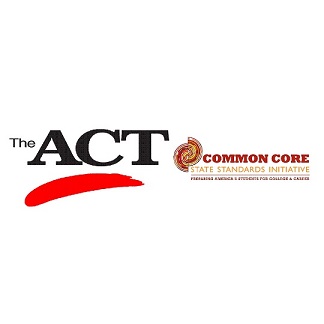Recent news on the Common Core State Standards has put focus on US states that have decided or changed their stance on aligning school curriculum with Core Standards. One aspect of this large discussion has been concerned with how standardized admissions tests, the SAT and ACT, align with Core Standards.
d
The news that the upcoming 2016 Redesigned SAT will align more closely with the Common Core has been a frequent headline recently, but the ACT has mentioned far less in this context. With this in mind, this article covers the basic facts about the connection between the content of the ACT and Common Core.
Whereas the SAT is currently undergoing major content changes, the ACT has undergone little to no major changes in recent years. However, the ACT does regularly undergo minor changes, in an effort to update its content continuously to provide the best match for students and college and career readiness.
ACT determines what changes are necessary through a validity process that aims to answer the question “Does a test measure what it aims to measure?” A key tool used in this research is The ACT National Curriculum Survey. The survey is used every 3 – 5 years to gather information on the knowledge students will need to succeed in college and career work, and the results influence changes made to the ACT.
Throughout its history, a major part of the development process for ACT tests has been in aligning with education standards used in the US, among which the Common Core is now included. Previously, the pre-2011 ACT test exhibited a close content alignment with the ACT. This trend has increased even more in recent 2015 changes first announced in May 2013, modifications based on results of the 2012 ACT National Curriculum Survey.
The current test uses the ACT College and Career Readiness Standards (CCRS) to determine its content. The change from the previous name ACT College Readiness Standards indicates a broadened focus on preparing students for college, career, and work that aligns closer with the Common Core’s objectives.
ACT describes its updates as including “clarification and reformatting of many of the Standards’ language,” to “make the comparisons with other sets of standards easier” and provide a “clear, longitudinal connection to the reporting categories featured in our lower grade assessments.”
From an overview level, the FAQ page on ACT.org specifically lists the following 2015 changes, excerpted below:
• For the ACT State and District testing program we will provide:
o The option of online administration of The ACT
o The introduction of optional supplemental tests using multiple item types offered alongside the existing optional Writing Test—assessing whether students can justify, explain, and use evidence to support claims
• The addition of questions on the Reading Test that address whether students can integrate knowledge and ideas across multiple texts
• The inclusion of additional statistics and probability items in the Mathematics Test to allow for reporting of student achievement in this area
We are now providing more information about progress toward these changes and announcing the following additional enhancements:
• Additional reporting to include STEM score, career readiness indicator, English Language Arts score, text complexity indicator, and reporting categories consistent with college and career readiness language
• Enhanced Writing Test based on the newly developed ACT writing competency framework that provides results in four domains
While the enhancement and evolution of The ACT continue and additional scores will be provided, The ACT will remain a curriculum-based achievement exam, and the well-respected 1-to-36 score scale will not change.
Yet another facet of the ACT’s alignment with the Common Core is a connected program called the ACT QualityCore. QualityCore is a set of high school course standards aimed at complete (100%) alignment with the Common Core. These standards cover grade 9 – 12 courses in English, Math, Science, and Social Studies, such as English 9 – 12, Algebra I and II, Geometry, Precalculus, Biology, Chemistry, Physics, and U.S. History. The function of these standards is to prepare students for the ACT via their school curriculum.
In summary, the ACT test is well aligned with the Common Core, and this alignment has also been increased in recent minor adjustments to the test. Like the SAT, the ACT seeks to update itself continuously, using research on test results and education standards as feedback for improvement.
More information on the ACT can be found on the official test website.
Socrato is a website for scoring and performance reports for standardized admissions test preparation. Socrato reports are available for the SAT, ACT, PSAT, SSAT, HSPT, and many more tests. You can learn more or try for free at socrato.com.











One Response to "ACT Changes and Common Core Alignment"